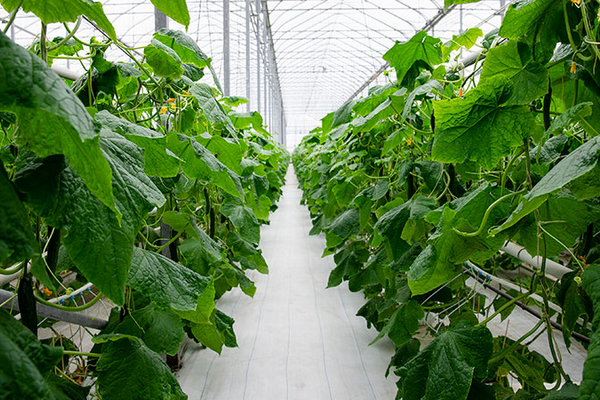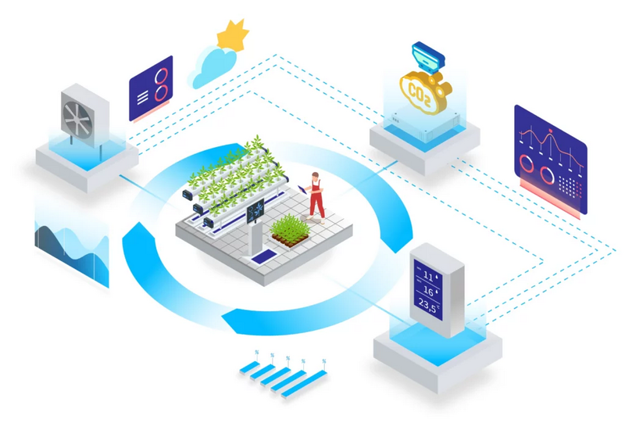"We can see different metrics that Koidra has put together, and we can evaluate those and learn from that. With optimization, we're always a yield-first focus, but when we can add a percentage of yield increase, while not increasing our greenhouse footprint, that's where we really benefit from this technology," said Mark Reimer, research and business development manager, Great Lakes Greenhouse Inc.
Koidra is a Seattle-based provider of intelligent greenhouse automation. The company recently showcased how its KoPilot technology integrates data sources to unlock new levels of operational efficiency and yield optimization. Together with English cucumber growers in Ontario, Canada, Koidra found out that growers face many challenges including, Managing the surge in electricity demand due to Ontario's projected 50 % increase in production over the next five years. Overcoming the barriers posed by different data management systems.
A fruitful trial
In 2022, Koidra started a four-month trial with Great Lakes Greenhouse in Leamington, Ontario. The project was supported by the Greenhouse Competitiveness and Innovation Initiative (GCII) and received financial support from Independent Electricity System Operator (IESO). The greenhouse areas managed by Koidra's technology showed a 19.6% increase in cucumber yield, compared to the controlled zones managed by traditional methods.
The results were considered a success due to the fact that yields increased, but energy consumptions stayed the same. This means the greenhouse became more efficient at producing a kilo of cucumbers.

Ketut Putra, solutions engineer at Koidra and a key figure in the trial, emphasized the importance of integrating data sources to achieve more effective outcomes. "This technology goes beyond just automating routine tasks. It gives you the ability to combine and interpret complex data, from many data sources, so you can make smarter decisions that benefit your bottom line and the environment."
The developments at GLG come at a crucial time. The Ontario greenhouse industry is facing increasing pressure to boost production while minimizing its environmental footprint. The success of Koidra's KoPilot technology at GLG provides a promising framework for others seeking to navigate these challenges.
Cultivating cucumbers in a greenhouse environment inherently faces energy challenges due to the crop's requirement for warm conditions. Maintaining optimal conditions requires significant energy use, especially in regions with cooler climates or during the colder months.
Ontario is home to a substantial cucumber growing industry, with nearly 400 hectares under cultivation, according to Agriculture and Agri-Food Canada. Koidra's KoPilot technology is designed for easy adoption across this area. The flexibility and scalability means growers throughout Ontario can implement the solution with minimal adjustment required.
"With the potential to replicate this success across different crops and climates, our technology has the potential to play a pivotal role in shaping the future of sustainable agriculture," Putra added.
What is KoPilot?
Koidra's KoPilot technology serves as a central hub that integrates sensor data and automates control processes. It streamlines operational management by gathering inputs from different sources and implementing control parameters. A rule-based smart alert system then identifies and solves potential problems, ensuring ideal growing conditions and efficient energy use.
Central to Koidra's KoPilot technology is its innovative algorithm that targets maximum photosynthetic efficiency. By optimizing conditions for photosynthesis, the technology enhances plant health and yield while contributing to energy conservation.
Once growers decide to invest, other challenges can quickly arise. Seemingly simple tasks such as connecting different sensors to share data become daunting. Since sensors come from different suppliers, there is often a struggle to communicate due to different technology and protocols. Other sensors need modifications to connect to the internet. Koidra's customized service approach allows growers to address these issues and develop a system of communication.
Koidra's KoPilot allows savvy growers to tailor dynamic set points based on their expert knowledge by automating their unique logic. This customization enables farms to accumulate knowledge based on growers' rationale, further enhancing the system's effectiveness.
Additionally, KoPilot's comprehensive logging of all adjustments ensures that any changes can be traced back to specific users, promoting an environment of accountability and transparency.

The challenges encountered by growers in Ontario are the same around the world. The integration of different data sources and the push for energy efficiency, especially amid rising production demands, are widespread whether in Northern Europe, Western Canada or the United Kingdom.
For instance, cucumber growers in the UK's Lea Valley have experienced high energy prices and market fluctuations, causing swings from shortages to oversupply. Delays in planting due to customers' unwillingness to cover higher energy costs, combined with international competition and new regulatory uncertainties, have added to the difficulties.
Similar energy issues have been reported in British Columbia, where Koidra is working with other large-scale glasshouse growers. The diversity of microclimates requires precise environmental control. The situation is comparable to Quebec, where the need for year-round production strains energy resources.
Greenhouses in the Netherlands, a global leader in horticultural innovation, also grapple with optimizing data integration to improve yields and reduce energy consumption. In 2022, high energy prices caused 80% of Dutch greenhouses using supplemental light to either change crops or not grow at all to save on electricity.
These examples underline the global relevance of Koidra's technology, offering a solution that addresses common obstacles faced by growers worldwide.
 For more information:
For more information:
Koidra
[email protected]
www.koidra.ai
